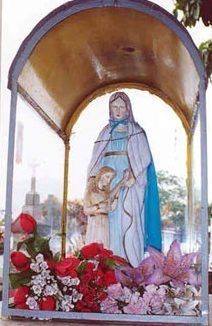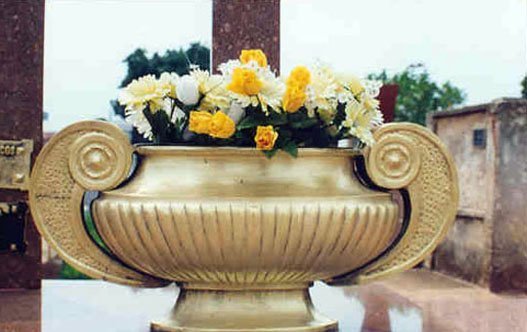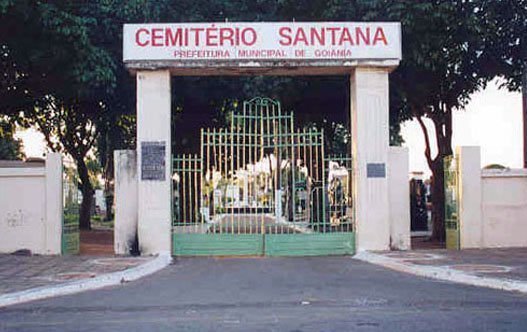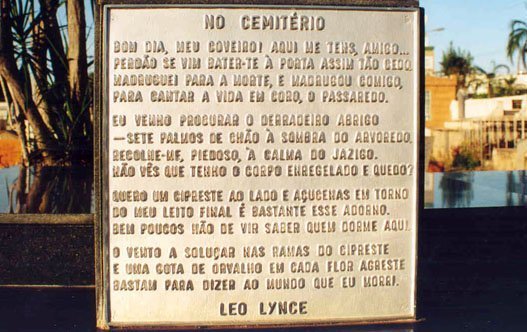Cemitério Santana
Goiânia (Goiás – GO)
Goiânia (Goiás – GO)
The cemetery was named after Saint Ann , mother of Mary and patron of the settlement originally known as Arraial de Sant-aspas-Ana (thence “Santana”), which later developed into the town of Goiás . The land destined for the Santana Cemetery was situated on the border of the townships of Campinas (later extinct) and Goiânia, currently the capital of the state of Goiás. At first the state government, which owned the land, managed the cemetery (Decree n. 90 A/38) that turned out a typical example of a secularized conventional cemetery. Prior to the proclamation of the republic in Brazil , cemeteries belonged to and were run by religious orders.

The layout design of Santana Cemetery is similar to that of a planned city. The quadrangular sections are subdivided in such a way as to form a grid pattern of drives, paths and alleyways. A devotional cross is planted halfway along the tree-lined entrance lane leading to the chapel, right at its intersection with a wider lane. The intersecting lanes form the design of a Latin cross.

Santana Cemetery is where many notorious personalities of the state of Goiás are entombed. One example is Pedro Ludovico Teixeira (†1979), founder of Goiânia, and his family, including wife D. Gercina Borges Teixeira and their children. Another popular tomb is that of Fr. Pelágio, C.Ss.R. (†1961), a priest who enjoyed great prestige in the early days of the state capital and whose gravesite is attended by numerous devotees for miracles attributed to him. His remains were transferred to the Mother Church of Campinas, in 1993.
Tombs of other outstanding personalities include those of former state representatives Alfredo Nasser (†1965) and Jamel Cecílio (†1980); the presenter of a country music show in the 1970s, known as Colonel Hipopota (†1981); poet and writer Leo Lynce (†1954); journalist and former Goiânia mayor Jaime Câmara (†1989), who founded “O Popular” newspaper and a TV station named after him; and the first mayor of Goiânia, Venerando de Freitas Borges (†1994).
Among the tombs of politicians, jurists, intellectuals and artists there are numerous graves of ordinary people, youths, and children who lived in Goiânia and whose lifetime contributions and memories also played a part in shaping the history of the capital city as well as of the state of Goiás.

The cemetery entranceway features art deco motifs; the portico features geometric elements rendered in high and low relief, such as for example the symbols of the morning and of the evening stars, and vertical freezes. The horizontal freeze that decorates the upper part of the wall surrounding the cemetery deserves special mention. The cast iron gate of the cemetery is embellished with stylized designs of fish (ichtus) and the cross, the principal symbols of Christian culture.



Cemetery is a cultural institution of the Western society. The preservation of its heritage is one way to legitimize it, as well as artistics and cultural activities carried on in situ.
+ 55 62 3225 5957 | + 55 62 996 143 427
E-mail: maelizia@terra.com.br
 Cemitério de Santa Isabel
Cemitério de Santa Isabel 



